Thriving regardless of home-base conditions:The CEE economic outlook varies country-by-country, but financial-services providers have risen above local issues by embracing fintech and selling off bad loans.
For most economies in Central and Eastern Europe (CEE), 2017 was the best year since the global financial crisis. Having weathered that storm, our regional winner, Raiffeisen Bank International (RBI), experienced positive results in practically all of its markets. But there are still bumps along the road ahead.
“Banks are challenged by the low-interest-rate environment of the euro area, and in some Central European markets, by the ever-increasing regulatory requirements and to some extent by political risks,” says CEO Johann Strobl. “This is also true for RBI, which managed to achieve good results despite these adverse developments.”
During 2017, RBI almost doubled net profit, even though net interest income remained flat. Most of the gains came from increased fee and commission income as well as a marked improvement in asset quality. The results also reflect measures to reduce portfolios of nonperforming loans (NPLs), contain costs and streamline internal systems.
“RBI went through a comprehensive transformation program and optimized its group structure, increased transparency and profitability, reduced complexity, improved its asset quality and strengthened its capital ratios. This allows the bank to focus on its core task: serving the customer,” says Strobl. “We are confident that the economic development in [CEE] continues to be good. Our customers share our optimism, and many plan to grow.”
Country Winners
The economies of Central Europe were the first to pick up, growing at close to twice the eurozone average; and our winner in the Czech Republic, CSOB, responded to these favorable conditions by expanding its loan portfolio by 6% while seeing loan quality improve, with nonperforming loans falling to a record low. With strong inflows of deposits, and increased assets under management, the bank lifted its operating income by 9%. Net profits of 17.5 billion Czech koruny ($822 million) were 16% higher than the previous year.
The bank’s longstanding partnership with Ceska posta, providing customer access through more than 3,000 post offices, was extended a further decade. Meanwhile, investment in digitization accelerated.
“We have been building up our digital capabilities and investing in technology,” says CEO John Hollows, “be it the new Internet banking for retail or new electronic banking platform for corporate and SME [small and medium-sized enterprise] clients.”
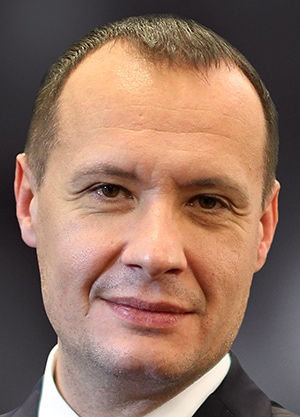
Michal Liday, Tatra Banka CEO |
Slovakia’s Tatra banka achieved its highest-ever sales of mortgage and consumer loans last year, boosting the operating result by 14.6%; but it is because of its innovative spirit that we named it our winner this year.
“Tatra banka’s brand promise is to be the leader in innovation and to regularly offer clients new, useful products that make their lives easier,” says CEO Michal Liday. Commenting on the impacts of new PSD2 regulation, he continues, “Our world has been entered by fintechs, and we have decided to cooperate with them. Their flexibility combined with our size and stability can have a synergic effect in both our clients’ interest and our ambition to simplify their lives.”
Our winner in Poland’s highly competitive market is Alior Bank, which—as Bank BPH’s acquirer—has gained scale and tapped network advantages. After taking the integration costs up front, the bank reported a net profit of 515 million Polish zoty ($151.6 million). Last year it became Poland’s SME market leader, supported by the launch of a new Web platform.
“Apart from excellent results and reinforced capital and liquidity positions,” says chairman Tomasz Kulik, “we have achieved success due to our ongoing work on improving customer satisfaction and maintaining a fast rate of organic growth.”
Hungary’s economy expanded by more than 4% in 2017—one of the highest growth rates in Europe—and our winner, OTP Bank, benefited from the falling cost of risk and lower default rates while growing lending volumes to offset falling net interest margins. At the group level, pretax profit was up by 76% on the back of increased revenues in Hungary and OTP’s franchises across the CEE region. The bank’s core operations within Hungary grew its loan book by 11%, with consumer credit up by a quarter. Although net interest margins fell, favorable risk cost trends helped boost the bottom line by 38% to 168.6 billion Hungarian forint ($650.8 million).

Steven van Groningen, Raiffeisen Romania President |
As the first bank to introduce contactless cards in Hungary, OTP is moving toward full digitization. During 2017, the bank made acquisitions in Croatia and Serbia; and CEO Sándor Csányi hinted at more to come: “We’ve waited for 20 years for this wave of banking consolidation in Europe. It’s finally happening now.”
The Romanian economy powered ahead last year. Our winner, Raiffeisen Romania, grew its loan book and raised pretax profit to €127 million ($152.4 million) on the back of higher net interest income. New loans were up by 19% overall, with a far larger slice being contracted by local entrepreneurs and large companies, while consumer and mortgage lending grew by 16%. The bank is investing heavily in digitizing internal flows and developing new Internet and mobile-banking apps.
“More than half of the individuals who own current account bundles have opted for the ‘zero’ [basic] version to manage their savings and operations as efficiently as possible,” says CEO Steven van Groningen. “Raiffeisen Bank’s priority for 2018 is to deliver enhanced experience to our customers by developing capabilities on three pillars: digitization, simplification and data.”
Our winner in Bulgaria, UniCredit Bulbank, is both market leader across most segments and highly profitable due to ongoing efficiency drives. Pretax profits came in more than 14% higher at €233 million due to stronger net interest income, a 9.2% increase in fees and commission and strong inflows of deposits.
“The region’s innovative approach, proven by the strong growth of its digital customer base, means it is the perfect testing ground for new digital and IT solutions,” says Carlo Vivaldi, head of UniCredit’s CEE division.
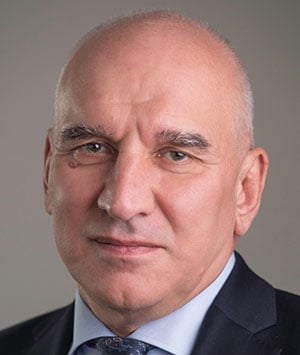
Levon Hampartzoumian, UniCredit Bulbank CEO |
UniCredit sold off entire NPL portfolios to Norwegian and Polish debt-recovery specialists, thus contributing to a 2.7% reduction in risk-weighted assets.
Societe Generale Albania was quicker than its peers to respond to that country’s reviving economy and demand for credit. The bank grew its retail lending to target segments, increasing its market share from 8.7% to almost 9.6% during the year.
In Turkey, Akbank turned in another strong performance in 2017. The bank was able to attract a further three million new customers overall, and one million new mobile customers. Lending grew by 17% and deposits by 16%, while net interest income and fees rose by 33% and 15% respectively. The bank lifted its net profit by 24% to above 4.8 billion Turkish lira ($1.3 billion). CEO Hakan Binbagil stated that key features in this were continuing growth, effective risk management and improved asset quality.
“In 2017, we invested about $150 million in technology, and in the last quarter we initiated the Akbank Data and Life Center project, which will amount to an investment of $250 million,” according to Binbagil. “Akbank aims not only to be the best in technology and information security, but also to create a working environment that will increasingly include the most innovative and visionary young people of the country.”
Serbia saw accelerating GDP growth and inward investment that helped this year’s winner, Banca Intesa Beograd, raise profit before taxes by more than 20%. A sharp rise in net fee and commission income combined with the bank’s growing loan book boosted operating income above 27 billion Serbian dinars ($272.7 million), an improvement of 9.5%. Investment in new technologies continues, feeding into the bank’s overall digital transformation program designed to boost customer experience while simplifying internal operations and slashing costs.
Market conditions were more challenging in Croatia, where the failure of a large public company had negative impacts on demand for credit from both consumers and businesses. Our winner, Privredna banka Zagreb, rode out the storm better than its peers, reporting a net profit of 1.4 million Croatian kuna ($223,000), only slightly less than in 2016 when it gained from selling its Visa Europe shares. Outgoing president Boo Prka points to the bank’s ability to contain costs at just 43% of income as being key to its generating a return on equity that averages 8.1%.
As Slovenia’s recovery quickened, the country’s largest bank, NLB Group, responded to rising demand for credit by increasing loan generation while further improving the structure of its loan portfolios and dispersing risk. The bank embraced digitization, the majority of card payments became contactless and usage of the mobile app nearly trebled during 2017.
“Bank services used on smartphones are becoming more and more popular,” says management board president Bla Brodnjak. “At NLB we therefore invest considerably in development and keep launching numerous innovations to the market, so that we can offer effective financial solutions to our users.”
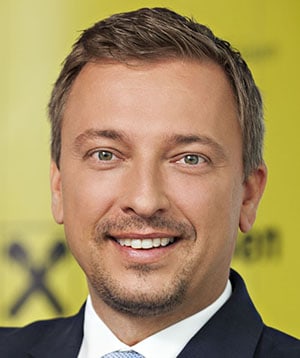
Karlheinz Dobnigg, Raiffeisen Bank dd Bosna i Hercegovina director |
The Bosnian economy’s accelerating growth helped our winner, Raiffeisen Bank dd Bosna i Hercegovina, record a nearly 31% uplift in profitability despite thin net interest margins. Fee and commission income rose by 4.3%, but much of the improvement came from decreasing provisions against impaired loans. The bank’s NPL ratio dropped to 6.9% while coverage increased by 14 percentage points.
“Last year we offered our clients the Raiffeisen Viber banking service, which enables sending money to any person from the Viber contact list in just a few steps,” says director Karlheinz Dobnigg, to highlight the bank’s innovative digital offerings. “We are the first bank in the country to offer cash payment via Viber; and to make our services easily available, we have modernized our branch network, harmonizing it with digitization trends.”
Ohridska Banka Societe Generale is our winner in Macedonia, where it has taken full advantage of its part in a major international banking group. As a result, the bank increased its market share of customer loans above 9% for the first time. Net interest income rose by 2.3%, while fees and commissions came in nearly 4% above the previous year’s. NPL and capital adequacy metrics improved markedly over the year.
Our winner in Kosovo is again TEB. Benefiting from an improving economic environment, the bank expanded its loan book during the second half of 2017 and made gains in profitability, generating an average return on equity above 17.5%. At the same time TEB extended its provisioning against nonperforming exposures and bolstered its capital buffers.
The Baltics
The dominance of large Nordic banks in the three Baltic republics, combined with an extremely tech-savvy customer base, makes for a different kind of banking market. And big changes are taking place. During 2017, Nordea and DNB set about merging their operations in the Baltics, while SEB furthered the integration of its Baltics division, contributing to its outperformance in key markets.
Lithuania’s economy had one of its best years since the global financial crisis; and our winner, SEB Lithuania, recorded its seventh consecutive year of growth, expanding its balance sheet by 3% to €7.7 billion. Rising demand for credit helped fuel a 15% increase in new loans issued to individuals and corporate customers, while deposits rose by 5%. Operating profit surged by 22%, and the bank generated a healthy 12.5% return on equity.
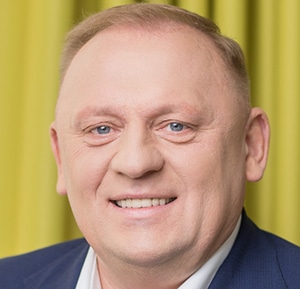
Raimondas Kvedaras, SEB Lithuania CEO |
“Throughout 2017, we kept our focus on technology, digital services and innovations,” says CEO Raimondas Kvedaras. “We launched two new apps—one for customer identification and an updated app version for banking operations—and implemented new initiatives such as contactless cards and a remote advisory service.”
Meanwhile, SEB banka Latvia grew its corporate loans by 31% to €780 million, “the largest amount of new financing we have issued to companies in Latvia,” according to board member Ints Krasts.
The bank’s underlying earnings were up 20% as it launched a new version of its internally developed mobile-banking app. The bank is also committed to sustainability issues that CEO Ieva Tetere sees as “a joint journey with our clients who have a similar approach and wish to conduct their business in a responsible manner.”
Estonia’s leading consumer-facing bank, Swedbank Estonia, is our winner again for 2017, a year when rising consumer confidence fueled higher household borrowing. Lending volumes grew throughout the year; and despite thin margins, net interest income rose by 2% to just short of €200 million, while commissions were 3% stronger. An improving credit environment combined with proactive debt management to reduce provisions against impaired loans to €2 million—almost half the previous year’s level.
Former Soviet Union
This year’s winner in Russia, Credit Bank of Moscow, is one of the leading privately owned banks in the country and has proved nimbler and more focused than the big state-controlled banks. By focusing on the wealthy Greater Moscow region and specializing in providing funding and associated services to corporate clients, Credit Bank of Moscow has more than tripled its market share over five years.
During 2017 it expanded its assets by more than 20% and its loan portfolio by nearly 23%, while attracting 36% more customer deposits. Net income rose to 20.7 billion Russian rubles ($358.7 million)—almost twice the comparable result for 2016—and return on equity leapt by more than six percentage points to 17.8%. The bank’s equity base was strengthened through an additional share offering on the Moscow Exchange that raised 14.4 billion rubles.
State-owned Belarusbank is again our winner for both growing its profitability and reducing its risk profile. Belarus’s largest bank reinforced its adding position in all key segments and, at year’s end, had made 63% of all retail loans and 41% of corporate lending. It services more than 22% of foreign-trade turnover in the country and has financed more than 400 investment projects involving Belarusian enterprises with foreign loan facilities. During 2017, Belarusbank attracted some $1.5 billion of trade financing and nearly doubled the volume of its trade-related loans. Profit improved by more than 10% to the equivalent of $87.2 million and it had two credit-rating upgrades.
Moldova Agroindbank, our winner in Moldova, is also its home market’s clear leader by most criteria. Although constrained by the relatively high credit risk and inflation rates prevalent in Moldova, the bank continued to grow market share and launched a comprehensive transformation project aimed at optimizing its internal structure and adjusting it to European standards. With its strong emphasis on IT innovation, further electronic-banking upgrades and a new app-based mobile-banking service were also launched.
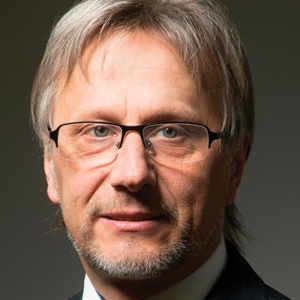
Volodymyr Lavrenchuk, Raiffeisen Bank Aval Chairman |
With the Ukrainian economy on the mend, our winner, Raiffeisen Bank Aval, advanced on all fronts: attracting new customers, increasing profitability and confirming its leadership in targeted segments such as SME lending. Net interest and fee income grew substantially, and the bank achieved a 48% uplift in pretax profit, although provisions against impaired loans were strengthened.
“We have managed to improve our brand awareness and successfully implement a number of organizational measures for improvement of customer experience,” says board chairman Volodymyr Lavrenchuk. “That became possible due to technology improvements, the implementation of a new branch concept and efficiency strengthening.”
Our winner in Georgia, TBC Bank, delivered another strong financial performance in 2017, posting a record underlying profit of 369.2 million Georgian lari ($142.4 million), up by more than 35% year-over-year. Profitability was underpinned by the integration of Bank Republic, which was completed well ahead of schedule.
“We are using the merger to drive cost synergies and significantly improve our efficiency, delivering an underlying cost-to-income ratio of 40.5% in 2017,” says CEO Vakhtang Butskhrikidze. “The integration has also increased our distribution network and expanded our customer base, allowing us to cross-sell our products to the newly acquired customers.”
Best Banks In Central And Eastern Europe2018
Regional Winner – Raiffeisen Bank International
| Country | Bank |
|---|---|
| Albania |
Societe Generale Albania |
| Belarus |
Belarusbank |
| Bosnia & Hercegovina |
Raiffeisen Bank dd Bosna i Hercegovina |
| Bulgaria |
UniCredit Bulbank |
| Croatia |
Privredna banka Zagreb |
| Czech Republic |
CSOB |
| Estonia |
Swedbank Estonia |
| Georgia |
TBC Bank |
| Hungary |
OTP Bank |
| Kosovo |
TEB |
| Latvia |
SEB banka Latvia |
| Lithuania |
SEB Lithuania |
| Macedonia |
Ohridska Banka Societe Generale |
| Moldova |
Moldova Agroindbank |
| Poland |
Alior Bank |
| Romania |
Raiffeisen Bank |
| Russia |
Credit Bank of Moscow |
| Serbia |
Banca Intesa Beograd |
| Slovakia |
Tatra banka |
| Slovenia |
NLB Group |
| Turkey |
Akbank |
| Ukraine |
Raiffeisen Bank Aval |



